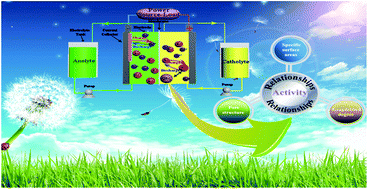Relationship between activity and structure of carbon materials for Br2/Br− in zinc bromine flow batteries
Abstract
Zinc bromine flow battery (ZBFB) is one of the highly efficient and low cost energy storage devices. However, the low operating current density hinders its progress. Developing high activity cathode materials is an efficient way to reduce cell electrochemical polarization and improve the operating current density. Thus, it is essential to study the relationship between the activity and structure of carbon materials to optimize the performance of ZBFB. The pore parameters and phase structure of four commercialized carbon materials were investigated by an N2 sorption isotherm experiment and X-ray diffraction (XRD), respectively. The electrochemical property of the four carbon materials was systematically studied by cyclic voltammetry (CV), linear sweep voltammetry (LSV) and electrochemical impedance spectroscopy (EIS) and the kinetic parameters and diffusion coefficients were calculated. The results indicate that specific surface area, pore size distribution and electrical conductivity are the main factors affecting the electrochemical activity of carbon materials. The carbon material with high surface area, suitable pore size distribution and excellent electrical conductivity shows high activity to the Br2/Br− redox couple in ZBFB. This study lays foundations for developing cathode materials of excellent activity for ZBFB, which can efficiently improve the power density, reduce the stack size of the ZBFB and boost its potential for commercial application.


 Please wait while we load your content...
Please wait while we load your content...